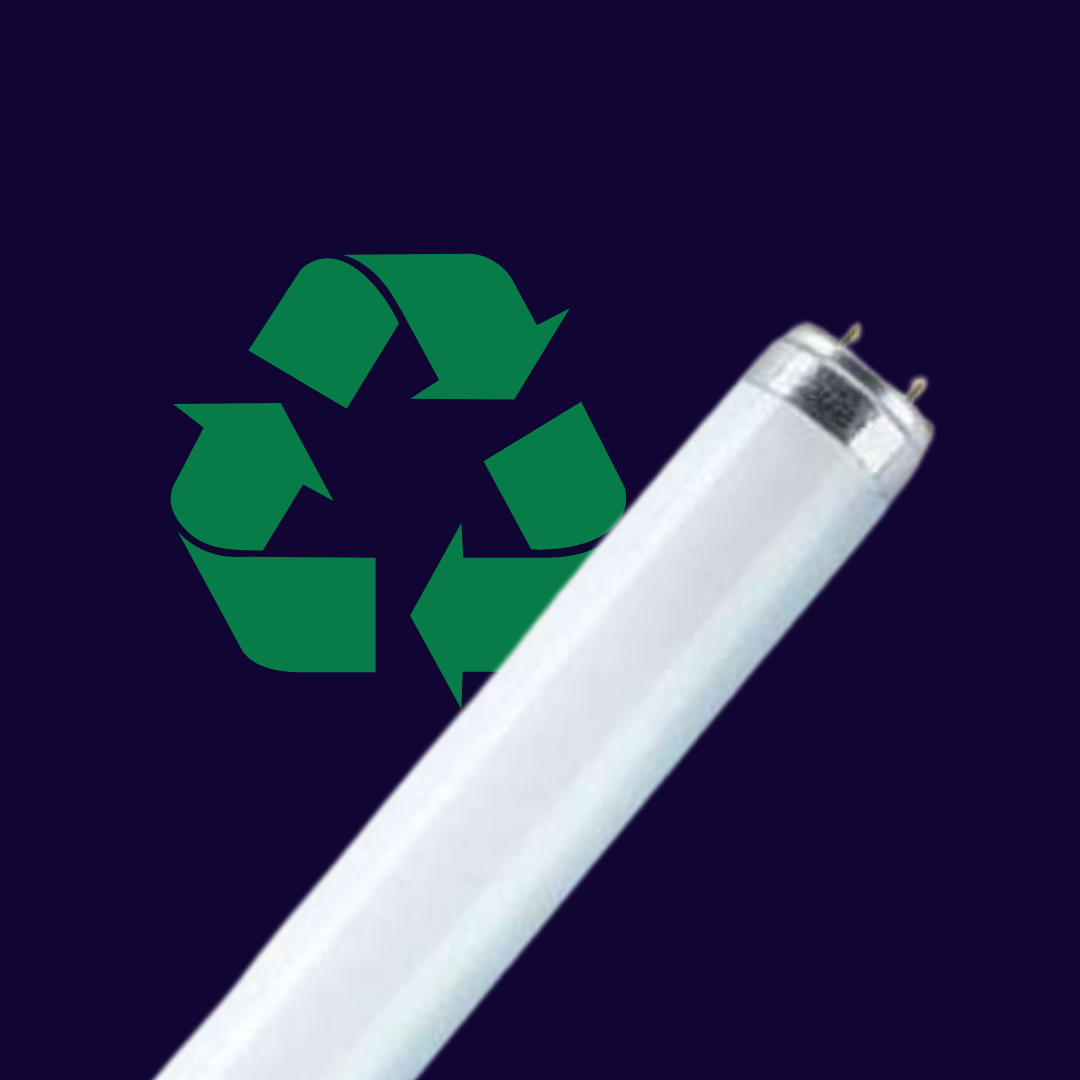Disposing of fluorescent tubes
When it comes to disposing of used fluorescent tubes or energy-saving lamps, there are strict regulations that serve to protect people and the environment. Find out everything you need to know about the proper disposal of fluorescent lamps and the like.

Dispose of fluorescent tube: the most important at a glance
Conventional fluorescent tubes have had their day, LED lamps are clearly on the rise. At the latest after the defect of the old illuminants, the question of proper disposal arises.
And rightly so, because in terms of recycling and because of the pollutants they contain, only very few types of light bulbs can be disposed of as residual waste.
Tip: If you are looking for an LED replacement for your old fluorescent tube, our Retrofit Product Finder will certainly help you. Fluorescent tubes must be disposed of in an environmentally friendly manner, because:
Fluorescent tubes must be disposed of in an environmentally friendly manner, because:
- Pollutants such as mercury are toxic and harmful to the environment and must be disposed of properly
- Valuable metals and components can be returned to the recycling system and reprocessed
- Electrical stores, collection points and recycling centers will accept your old fluorescent tubes free of charge
- Fluorescent tubes are no longer manufactured according to RoHS directive. LED tubes are considered an energy-efficient and environmentally friendly alternative.
Disposing of fluorescent tubes: procedure and costs
If you want to dispose of a normal household amount of used fluorescent tubes, you can take them to certain collection points. Electrical retailers will accept your old lamps and recycle them free of charge. Alternatively, recycling centers will accept fluorescent tubes.
To avoid damage and the associated leakage of harmful mercury, it is best to transport your old fluorescent tubes in a cardboard box. If a tube breaks, use gloves and a mask if necessary. Although the mercury in fluorescent tubes is present only in small quantities, do not take any health risks.
Disposing of fluorescent tubes at electronics stores or recycling centers is free of charge. Some DIY stores, supermarkets and selected drugstores will accept your discarded light bulbs.
Municipal hazardous waste collection vehicles, which collect electrical waste and old electrical appliances in household quantities, also take care of the proper disposal of your fluorescent tubes. The dates for the mobile collection of hazardous substances can usually be found in the collection calendar of your city or district.
Disposal instructions according to lamp type
The Electrical and Electronic Equipment Act (ElektroG) provides different regulations regarding the disposal of different types of lamps.
Here is an overview of the most common types of lamps:
Incandescent bulbs and halogen lamps may generally be disposed of in household waste, as they are only made of glass and metal. Halogen lamps may only be disposed of in the gray garbage can without ballast.
Caution: Even though halogen and incandescent lamps are largely made of glass, they must not be disposed of in the glass container. The glass has a different composition than that of bottles and jars and leads to problems during recycling.
Metal halide lamps may only be discarded as hazardous waste at special collection points or at recycling centers. Unlike conventional halogen lamps, they contain various harmful substances, such as mercury, sodium, strontium or rubidium.
Compact fluorescent lamps or energy-saving lamps are also taken to the recycling center or to designated collection points. In this way, not only the professional disposal of the pollutant components is taken care of. High-grade metals such as aluminum, copper or tin can be recycled.
The same applies to fluorescent tubes. Due to the mercury content and in the sense of recycling rare metals and earths, fluorescent tubes of any type and design belong to be disposed of properly.
LED lamps do not contain any toxic components, but they should still be disposed of at collection points, recycling centers or lamp stores. In this way, high-quality components such as the LED chip, semiconductor materials or plastic lenses can be recycled.
Note: Larger quantities of defective lamps of any kind (50 pieces or more) must be disposed of at bulk collection points.
FAQ
What do I have to consider when disposing of fluorescent tubes and energy-saving lamps?
Fluorescent tubes and energy-saving lamps contain harmful substances such as mercury. Proper disposal is important for the protection of people and the environment. In addition, valuable materials that are built into the lamps can thus be fed into the recycling cycle.
How do I dispose of discarded fluorescent tubes?
Old fluorescent lamps can be returned free of charge in normal household quantities to electronics stores or recycling centers. Municipal hazardous waste collection vehicles also accept your old lamps. Some supermarkets, drugstores and DIY stores also offer collection points for lamps.
How much does it cost to dispose of old fluorescent lamps?
The proper return of fluorescent tubes is usually free of charge. However, if you are caught disposing of your fluorescent tubes improperly, you will be subject to hefty fines of up to 1,000 euros.
How dangerous is mercury in fluorescent lamps?
As long as the fluorescent tube is intact, you don't have to worry about the mercury it contains. And even in case of damage, you do not have to panic. The amount of mercury vapor released is very small. Nevertheless, you should be careful when removing the parts and shards, use gloves and ventilate thoroughly.
